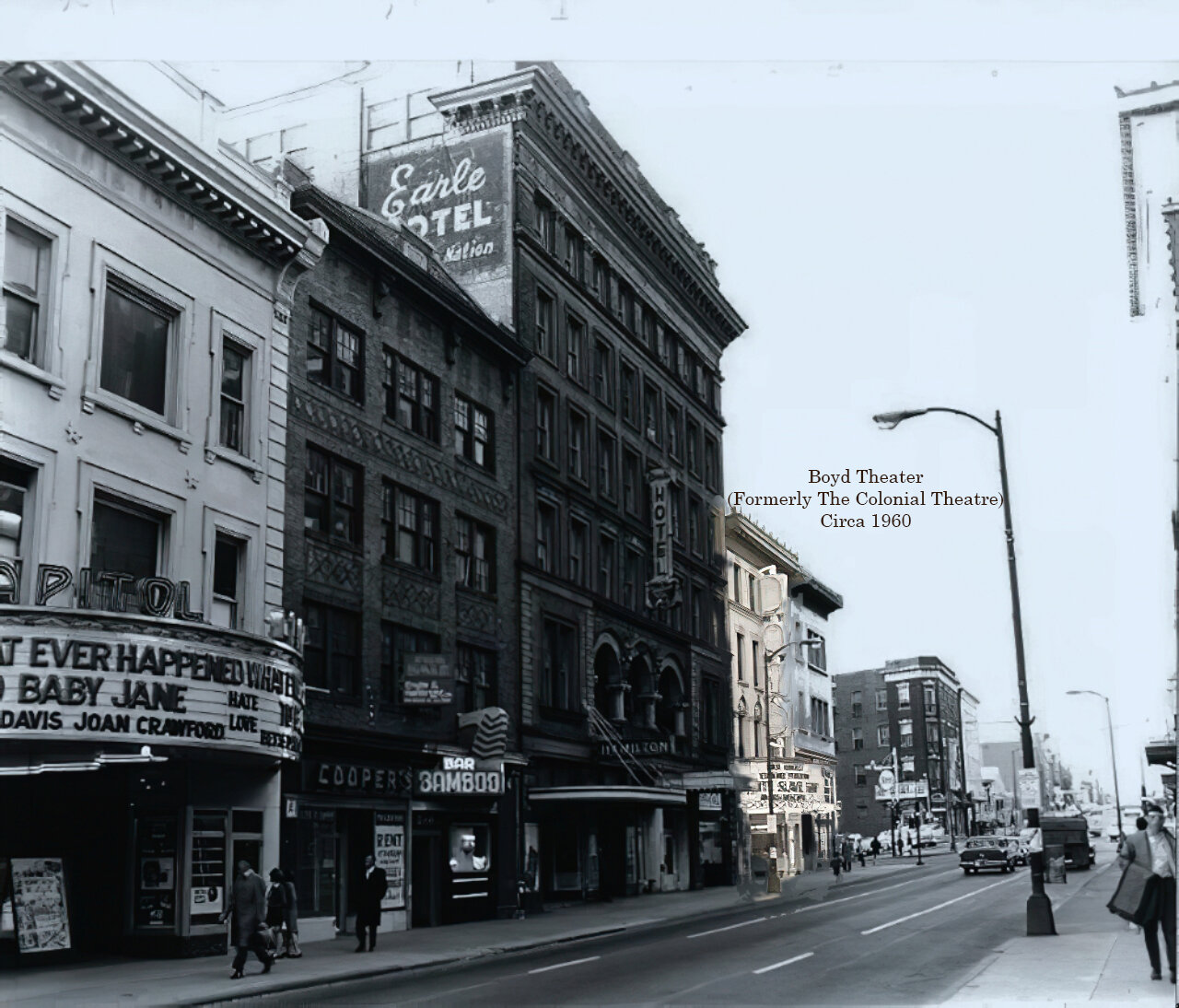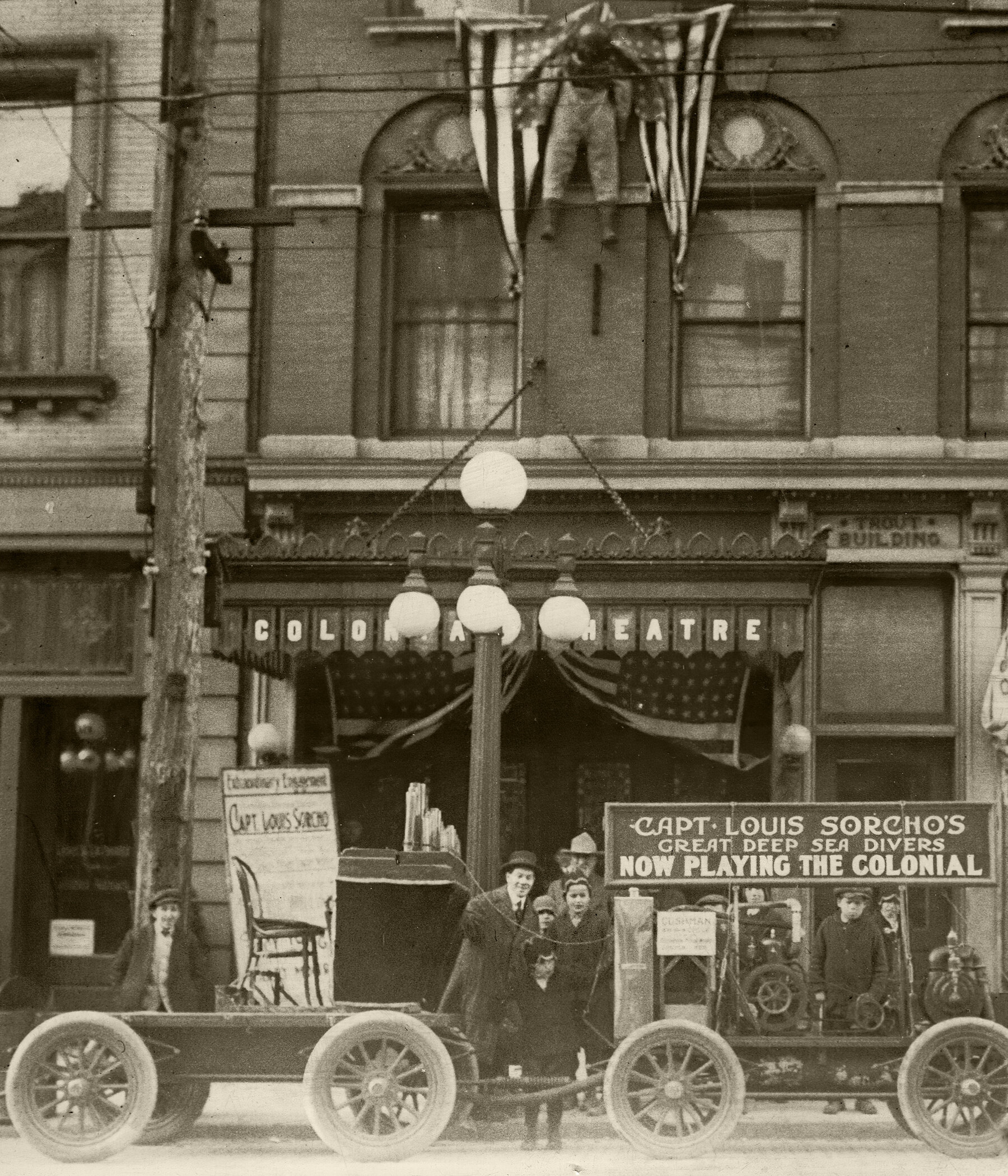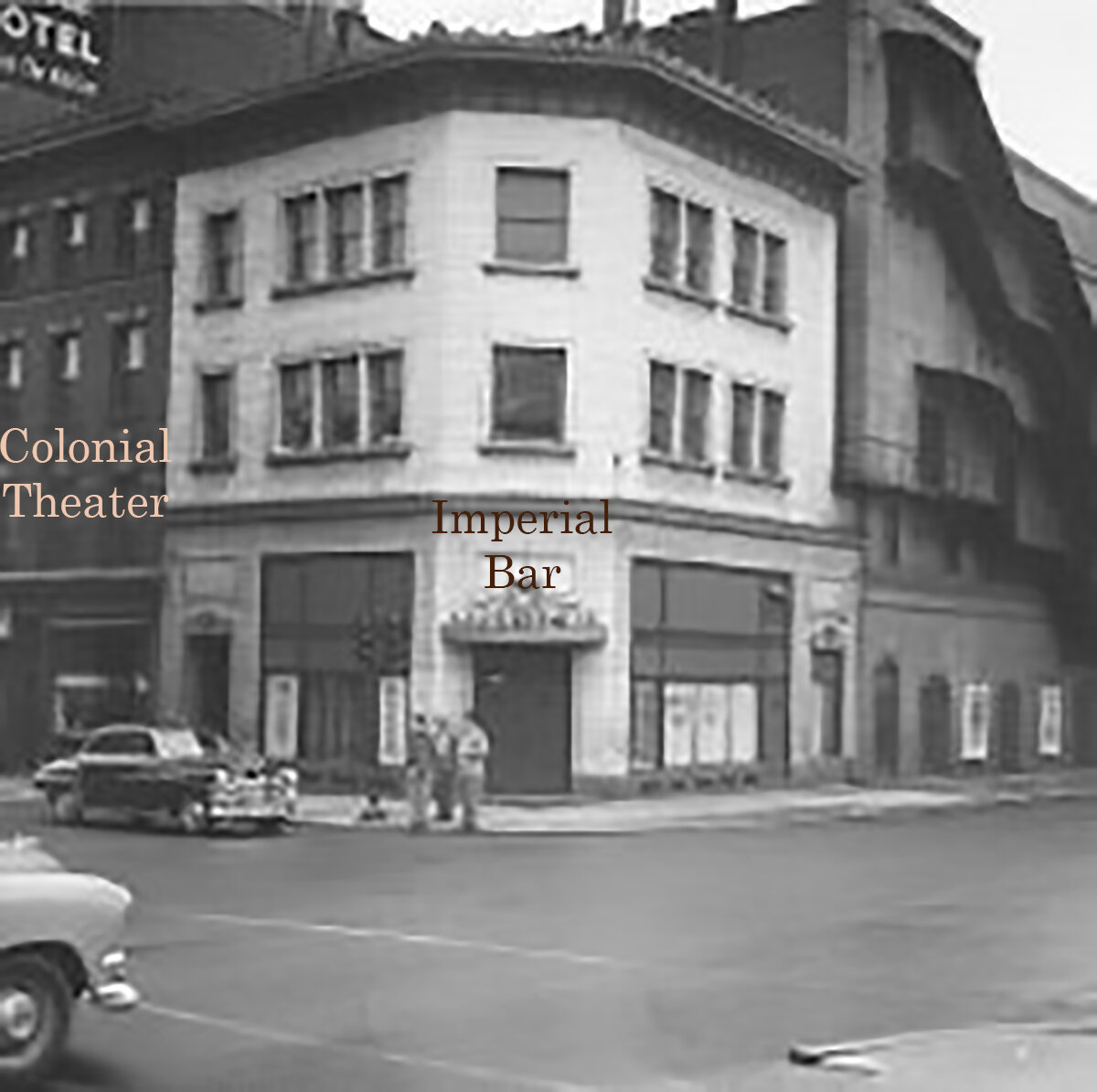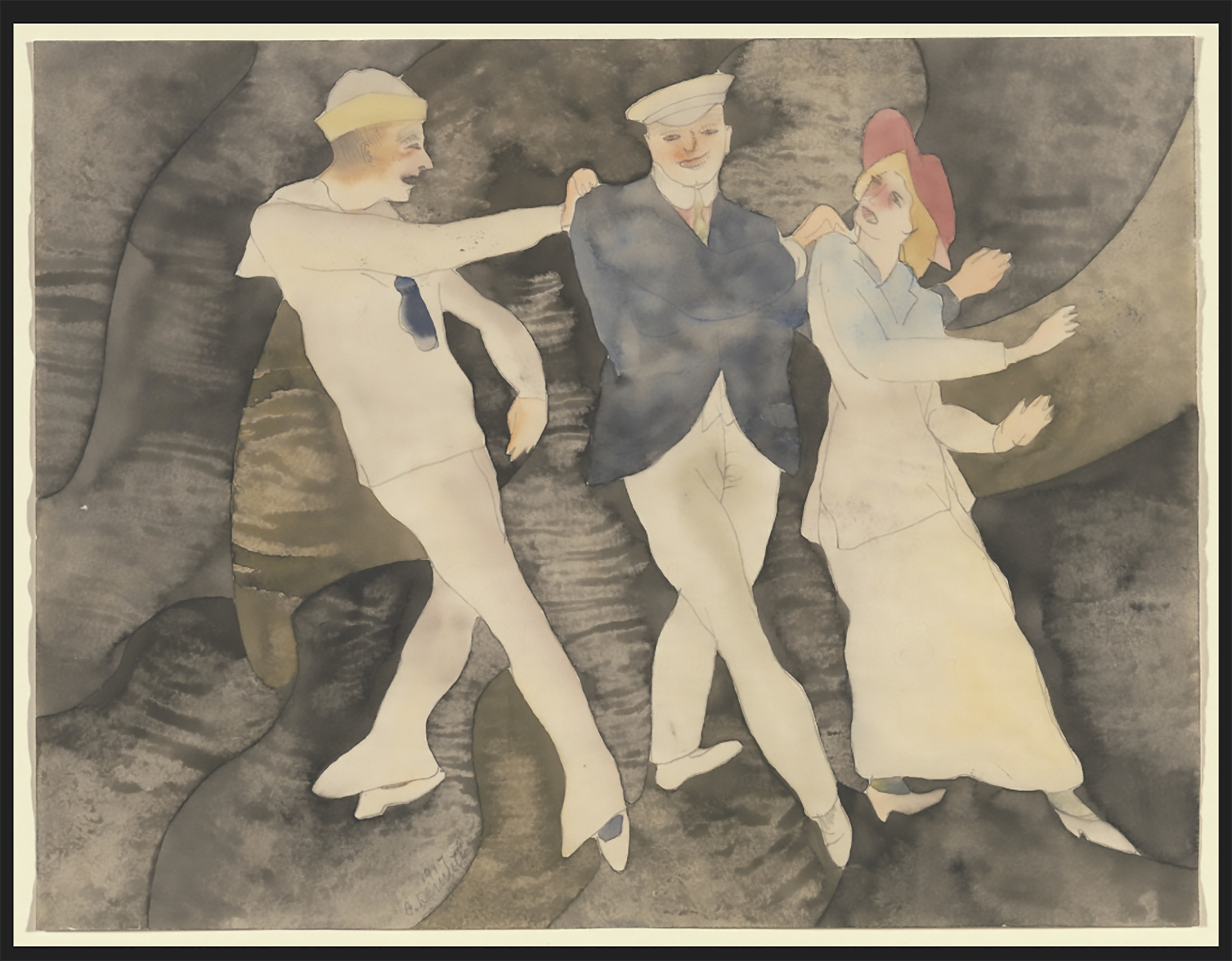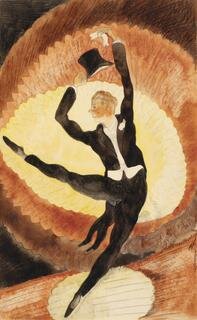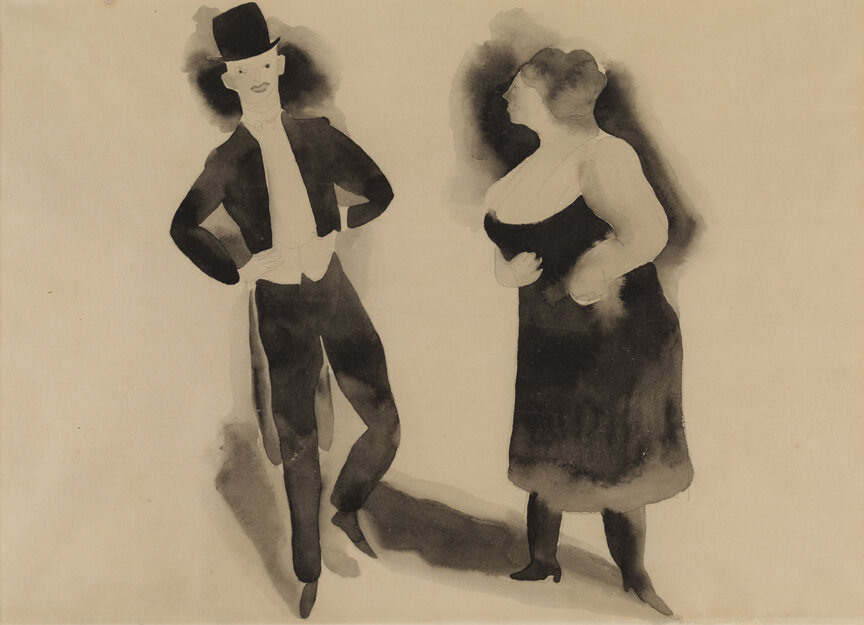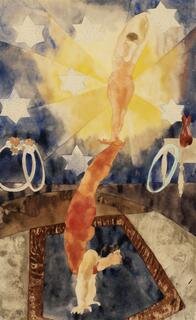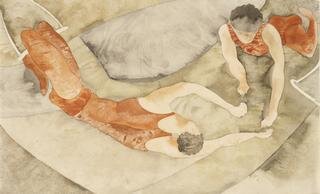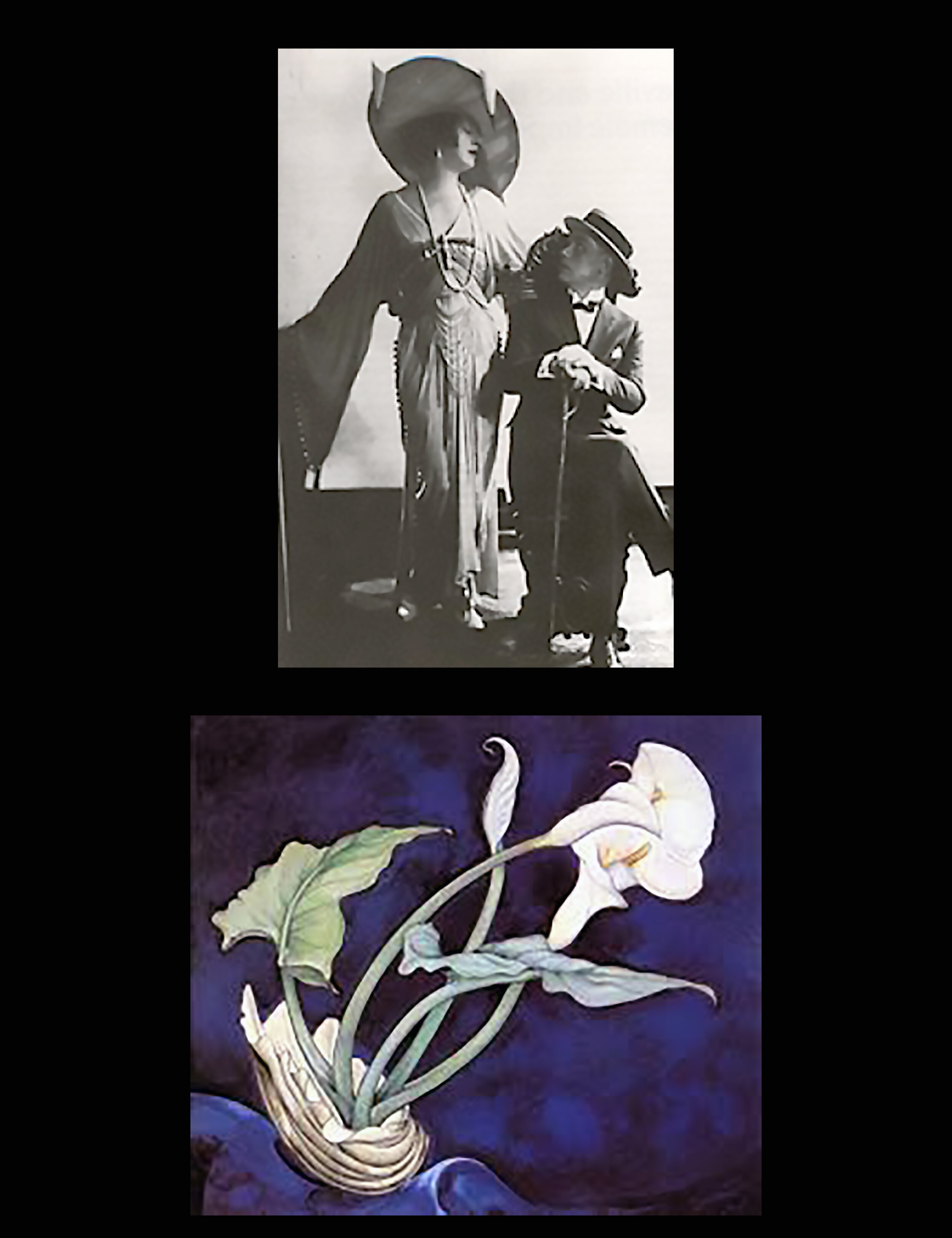Stop 6: The Colonial Theater
The Colonial Theater | 134 North Queen Street
On this block, there were 4 theaters during Demuth’s day: The Capitol at 135, the Hamilton and The Orpheus at 150, and the Colonial at 134. Of these, the Colonial was Demuth’s favorite. The Colonial presented 2 vaudeville shows a week, one running Monday, Tuesday, and Wednesday, replaced by a new show for Thursday, Friday, and Saturday.
Remember when I said Demuth was fond of exotics? Vaudeville celebrated exotics, and Demuth celebrated Vaudeville, both in his writing and his painting. In his unpublished manuscript “You Must Come Over,” Demuth wrote: “Couldn’t we talk about American musical shows, revues,--the people who act in them (have acted in them), and dance: they really are our “stuff.” They are our time,--"54 Demuth painted a series of Vaudeville images between 1914-1919. Among his favorite subjects were the acrobats, such as Lew Palmore or Bert, Johnson, and Bert.
On Monday, September 30th, 1912, Demuth had a going away party at the Colonial before sailing for Europe. The guests at Charles’ going away party included Charles. Alice Hitchborn and Dorothy Schroeder, Percy Appel and Mary Fordney, and Bobby Locher.
Robert Evans Locher was one of Charles’ closest friends and the man most often mentioned by biographers as a possible lover.
Robert Locher Portrait by Baron Adolphe de Meyer, Private Collection
Painted Wall Design by Robert E. Locher, Private Collection
In a “Know your local artist” series that ran in the Lancaster New Era, the following biography was published:
Robert E. Locher, designer extraordinary, of New York City, was born in Lancaster. His first art teacher was Miss Frances D. Calder who taught him water color. He started as an apprentice draughtsman and spent five years in architects’ offices in Lancaster and Philadelphia, paying particular attention to designs and details of interiors, special furniture, light fixtures and accessories. In 1914 he went to New York as a free lance worker; joined the Washington Square Players, now known as the Theater Guild, and was one of their first designers of settings.
Mr. Locher is famous for his painted rooms, and for his furniture and accessories in glass and metal. His clients have included many prominent people, including Mrs. Harry Payne Whitney and Mrs. Jay Gould.
He worked for some time designing settings, costumes and lighting for Florenz Ziegfeld and other theatrical producers, including Charles B. Cochrane in London and M. Paul Poiret in Paris.
Mr. Locher has written a number of authoritative articles on modern art and decoration, with original designs , for such magazines as “House and Garden,” “Vogue” and “Home and Field”.55
Charles and Robert became friends in 1909 and remained close throughout their lives. They often shared professional introductions. Robert was working on Broadway when he took Charles to meet Bert Savoy, the famous Female Impersonator who taught Mae West everything she knew—and much of her act. He popularized the phrases “You slay me”, “You don’t know the half of it”, and “You Must Come Up” (which Demuth used as the title of an unpublished play).
Top: Bert Savoy and Jay Brennan, New Amsterdam Theater Collection, Gift of Carla Cushman. | Bottom: Bert Savoy, Calla Lillies, Alfred Stieglitz Collection, Co-owned by Fisk University, Nashville, Tennessee, and Crystal Bridges Museum of American Art, Bentonville, Arkansas
“Bert Savoy’s death was just as colorful and eyebrow-raising as his life, and has entered into show-biz legend. During a heat wave on June 26, 1923, Bert (then about 46 or 47 years old) was strolling on Long Beach with four actor friends; he and dancer Jack Grossman were several paces ahead of their companions. A thunderstorm rolled in, breaking the heat; at the first thunderclap, Bert put one hand on his hip and supposedly said, “Well, ain’t Miss God cuttin’ up somethin’ fierce?” (or, alternately, “That’ll be quite enough out of you, Miss God!”)—and was promptly struck dead by lightning. Grossman, too, was killed, and their friends knocked flat but uninjured.”56 Demuth painted "Calla Lillies” as a tribute to Bert, and the painting makes coded references to Savoy's death and life: “The shell and dark wave underneath allude to the site of his death, while calla lilies are customarily associated with funerals. The calla lilies also suggest Savoy’s playful subversion of gender identity on stage, as their forms evoke both male and female anatomy. The sense of sexual ambiguity hints at the homosexuality of the subject and the artist in a way that might only be detected by those within Demuth’s inner circle.”57
In Demuth’s Will, he left all of his watercolors to Locher, and asked his Mother to leave the House and the Suits (no one knows if he meant his clothes or his furniture) to Robert after her death, a request she honored. Among the watercolors was a series of explicitly homoerotic paintings depicting gay life in New York. Carl van Vecten commented “You know that all painters paint some scabrous pictures, don’t you? Well, when Demuth died his mother handed the scabrous pictures to Locher in a portfolio or folder, saying: ‘I’m sure that anything Charles did was art. You will know what to do with these.’ That seems to be a strange thing for a mother to have done. Any other mother would have destroyed the scabrous works, don’t you think?”58
We will now head to the Hotel Brunswick, Charles’ destination, and talk about his relationship with Lancaster.
54 Farnham, Life, Psychology, and Works, Vol.3, p.929
55 Lancaster County Historical Society Archives, Know Your Local Artists scrapbook, MG 434, Box 083, Archives South, Know Your Local Artists Scrapbo (Manuscript Group)
56 https://ladailymirror.com/2012/10/30/eve-golden-queen-of-the-dead-bert-savoy/
57 Label Text: https://collection.crystalbridges.org/objects/2972/calla-lilies-bert-savoy
58 Farnham: Life, Psychology, & Works, Vol. 3. P.986

